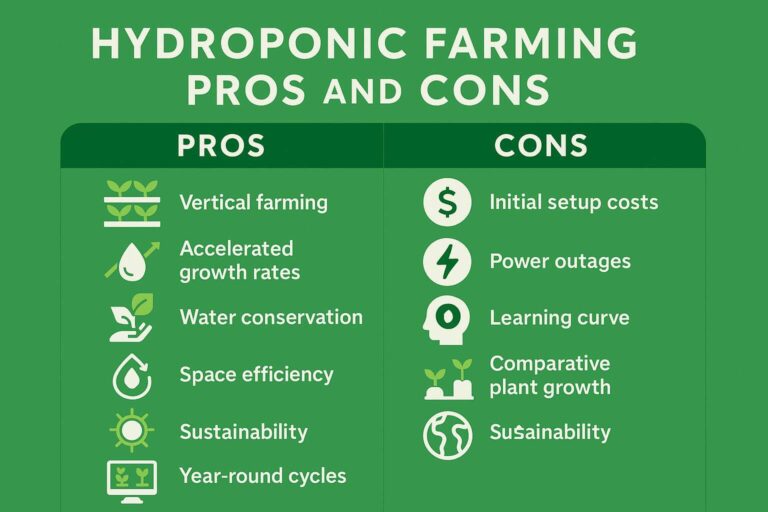Lavender, with its fragrant blooms and versatile uses, is a beloved herb that has found its place in gardens, aromatherapy, and culinary delights. Whether you’re an experienced gardener or a novice with a green thumb, understanding lavender’s light requirements is essential for its successful cultivation. In this comprehensive guide, we will explore everything you need to know about providing the right amount of light for your lavender plants to thrive.
Introduction to Lavender
Before delving into the specifics of lavender’s light requirements, let’s begin with a brief introduction to this charming herb.
Lavandula, commonly known as lavender, is a genus of flowering plants in the mint family, Lamiaceae. Lavender is native to the Mediterranean region and is renowned for its aromatic, silvery-green foliage and striking purple, blue, or pink flowers. This herb has a long history of use for its soothing fragrance, medicinal properties, and culinary applications.
Lavender is highly prized for its essential oil, which is extracted from the flower spikes. It is used in aromatherapy, perfumery, and as an ingredient in various personal care products. Additionally, lavender’s delightful flavor makes it a popular choice in culinary dishes and beverages.
In the garden, lavender is a versatile and low-maintenance plant that can be grown for its ornamental beauty and practical uses. However, to ensure the health and vitality of your lavender plants, you must meet their specific light requirements.
Understanding Lavender Light Requirements
Lavender is a sun-loving plant, and its light requirements are crucial to its growth and overall well-being. Inadequate or excessive light can lead to several problems, including poor growth, reduced flowering, and susceptibility to diseases. To cultivate healthy and thriving lavender plants, it’s essential to understand their light needs in detail.
Full Sun vs. Partial Sun: What Lavender Prefers
Lavender thrives in full sun, which typically means at least 6 to 8 hours of direct sunlight per day. When provided with the right amount of sunlight, lavender exhibits its best qualities, such as robust growth, abundant blooms, and intense fragrance. Here’s why lavender prefers full sun:
- Optimal Growth: Full sun provides the energy needed for photosynthesis, allowing lavender to produce sufficient food for growth and maintenance.
- Enhanced Aroma: Sunlight stimulates the production of essential oils in lavender, resulting in a stronger and more fragrant aroma.
- Flower Production: Lavender plants in full sun are more likely to produce an abundance of beautiful flowers, which is a primary reason for cultivating this herb.
While lavender thrives in full sun, it can also tolerate partial sun, where it receives around 4 to 6 hours of direct sunlight daily. However, in partial sun conditions, lavender may not grow as vigorously, and its fragrance and flower production may be diminished. If you live in an area with scorching summers, providing some afternoon shade can be beneficial to protect your lavender from extreme heat.
Factors Influencing Lavender Light Requirements
Several factors can influence the light requirements of lavender, and understanding these factors will help you create the ideal growing conditions for your plants.
- Climate: Lavender’s light requirements can vary based on your climate. In regions with mild temperatures and plenty of sunshine, lavender may tolerate partial sun more effectively. In contrast, in hot and dry climates, lavender may benefit from some shade during the hottest part of the day.
- Soil Quality: Well-drained soil is crucial for lavender. If your soil is heavy and poorly drained, lavender may suffer from root rot in full sun. In such cases, providing a bit of afternoon shade can help maintain soil moisture levels.
- Altitude: At higher altitudes, the intensity of sunlight may be greater. Lavender grown at higher elevations might require slightly more shade or protection during the hottest hours of the day.
- Microclimates: Gardens often have microclimates where certain areas receive more or less sunlight than others. Observe your garden throughout the day to identify the best location for planting lavender.
Choosing the Right Location for Lavender
To ensure your lavender thrives, it’s crucial to select the right location in your garden. Here are some tips for choosing an ideal spot:
- South-Facing Exposure: In the Northern Hemisphere, a south-facing location receives the most sunlight throughout the day. Consider planting your lavender in a spot with a southern exposure for maximum sun exposure.
- Well-Drained Soil: Lavender despises soggy roots, so choose a location with well-drained soil. Raised beds or containers can be excellent options if your soil doesn’t drain well.
- Protection from Strong Winds: While lavender loves sunlight, it may benefit from some protection against strong winds, which can dry out the soil and stress the plants. Planting lavender near a windbreak or wall can help.
- Observation: Spend time in your garden throughout the day to observe how the sunlight moves and whether there are any shady spots. This will help you choose the perfect spot for your lavender.
Planting and Caring for Lavender
Now that you understand lavender’s light requirements, let’s delve into the planting and care tips that will ensure your lavender thrives.
Planting Lavender
- Choose the Right Variety: There are many lavender varieties available, each with its own characteristics. Select a variety that suits your climate and gardening goals.
- Spacing: Lavender plants need space to grow and good air circulation to prevent diseases. Space them at least 2 to 3 feet apart.
- Soil Preparation: Lavender prefers well-drained soil with a slightly alkaline pH. If your soil is heavy or acidic, amend it with sand and lime to improve drainage and pH levels.
- Planting Depth: When planting lavender, make sure the crown (the point where the stems meet the roots) is at or slightly above the soil level. Planting too deeply can cause the plant to rot.
- Mulching: Apply a layer of mulch around the base of the plant to help retain soil moisture and suppress weeds. Avoid mulching directly against the stem to prevent rot.
Watering Lavender
- Establishment Period: Lavender plants require regular watering during the first few weeks after planting to establish their root systems. Water deeply but infrequently to encourage deep root growth.
- Mature Plants: Once established, lavender is drought-tolerant and prefers to dry out between waterings. Water sparingly, only when the soil is dry to a depth of about 1 inch.
- Morning Watering: Water your lavender in the morning to allow the foliage to dry before evening, reducing the risk of fungal diseases.
Pruning Lavender
Regular pruning is essential to maintain the shape and health of your lavender plants. Here’s how to do it:
- Spring Pruning: In early spring, when you see new growth emerging, prune your lavender to remove about one-third of the previous year’s growth. Be sure to avoid cutting into old, woody stems.
- Deadheading: After the first flush of blooms in summer, deadhead (remove spent flowers) to encourage additional blooming. This will also prevent the plant from putting energy into seed production.
- Annual Pruning: Every year, lightly prune your lavender to maintain its shape and prevent it from becoming leggy. You can do this after the last flush of blooms in late summer or early fall.
Fertilizing Lavender
Lavender doesn’t require heavy fertilization. In fact, too much nitrogen can lead to excessive foliage growth at the expense of flowers and fragrance. Here’s how to fertilize lavender:
- Low-Nitrogen Fertilizer: Use a balanced or low-nitrogen fertilizer in the spring, once the plant has started to grow. A slow-release, granular fertilizer with a formulation like 10-10-10 or 5-10-10 works well.
- Fertilize Sparingly: Avoid over-fertilizing, as this can lead to weak growth and diminished fragrance. A single annual application in spring is usually sufficient.
Overwintering Lavender
Lavender is generally hardy, but it may require some protection during harsh winter conditions, especially in regions with cold temperatures and heavy snowfall. Here are some tips for overwintering lavender:
- Prune Lightly: In late fall or early winter, lightly prune your lavender to remove any dead or overly long growth. This will help prevent snow and ice from weighing down the branches.
- Mulch: Apply a layer of mulch around the base of the plant to insulate the roots and protect them from extreme cold.
- Protect from Heavy Snow: If your region experiences heavy snowfall, consider covering your lavender with a burlap or snow blanket to prevent damage from the weight of the snow.
- Container Lavender: If you’re growing lavender in containers, move the pots to a sheltered area or garage during the winter months to protect them from freezing temperatures.
Lavender Light Requirements for Containers
Growing lavender in containers can be a great option for those with limited garden space or challenging soil conditions. However, it’s essential to pay close attention to their light requirements when growing lavender in pots.
- Container Size: Choose a large container with adequate drainage holes to accommodate the mature size of the lavender plant. A pot that is at least 12 inches in diameter is a good starting point.
- Potting Mix: Use a well-draining potting mix designed for container gardening. Mixing in some perlite or sand can improve drainage further.
- Placement: Place your lavender container in a location that receives at least 6 to 8 hours of direct sunlight per day. Rotate the pot occasionally to ensure even sun exposure on all sides of the plant.
- Watering: Container-grown lavender may dry out more quickly than those in the ground. Monitor the soil moisture closely and water when the top inch of soil feels dry.
- Fertilizing: Container plants may benefit from more frequent, diluted applications of a balanced, slow-release fertilizer during the growing season. Follow the manufacturer’s instructions for application.
Common Lavender Problems and Solutions
Even with the best care, lavender can face some common issues. Here are some problems you might encounter and their solutions:
- Yellowing Leaves: Yellowing leaves can be a sign of overwatering or poor drainage. Adjust your watering frequency, and ensure the soil drains well.
- Leggy Growth: If your lavender becomes leggy with long, weak stems and sparse foliage, it may not be receiving enough sunlight. Move it to a sunnier spot or prune it to encourage bushier growth.
- Fungal Diseases: Lavender can be susceptible to fungal diseases like root rot and powdery mildew in humid conditions. Ensure good air circulation, and avoid overhead watering.
- Insect Pests: Aphids, spider mites, and whiteflies can occasionally infest lavender. Spray the plants with a strong stream of water or use insecticidal soap to control these pests.
- Winter Damage: If your lavender suffers winter damage, wait until spring to assess the extent of the damage. Prune away dead or damaged growth and give the plant time to recover.
Conclusion
Growing lavender can be a rewarding and aromatic experience, but understanding its light requirements is key to success. Lavender thrives in full sun, but it can tolerate partial sun with proper care. When choosing a location for your lavender plants, consider your climate, soil quality, and microclimates in your garden.
Proper planting, watering, pruning, and fertilizing will help your lavender flourish, and container gardening can be a convenient option for limited spaces. Be vigilant for common problems and address them promptly to ensure the health and longevity of your lavender plants.
With the right care and attention to their light requirements, you can enjoy the beauty and fragrance of lavender in your garden for years to come. Whether you use it for its aromatic oils, culinary delights, or as a lovely ornamental, lavender is a versatile and delightful addition to any garden.




